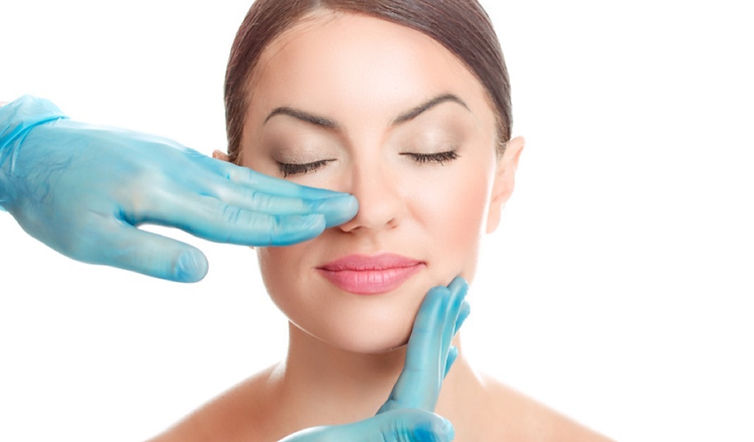
RHINOPLASTY
Rhinoplasty is surgery to address nasal deformity and give the face a more balanced appearance. This can include straightening the nose, taking down a hump, refining the nasal tip, building-up a nose, or even repairing a nose that was previously broken. Dr. Obourn believes the goal of this surgery should be to restore facial harmony, while pulling an observer’s attention away from the nose and toward the eyes.
This surgery is often performed in conjunction with surgery to help the patient breathe better. Commonly this involves straightening a deviated nasal septum or repairing narrowed nasal valves.
It is recommended that rhinoplasty surgery not be performed before the face has finished growing, on order to prevent disruption of growth plates. In men, this is usually around the ages of 17-18 and in women, 15-16 years old.
Technique
Dr. Obourn primarily utilizes a “closed” technique, where all incisions are hidden inside the nostrils. On some occasions, however, she does find it necessary to perform an “open” approach which involves an incision at the base of the nose (typically this heals very nicely and is imperceptible). Rhinoplasty is a very individualized procedure and Dr. Obourn will take time and great care to develop a surgical plan that is right for you.
There are times (more commonly in revision cases) where Dr. Obourn needs to use ear or rib cartilage to reconstruct the nose. She will discuss this with you in more detail at your consult if she believes it may be necessary.
Risks:
-
Bleeding
-
Infection
-
Scarring
-
Nasal septal perforation
-
Worsening of nasal breathing
-
Persistent deformity, asymmetries, or palpable deformities
-
Pain
-
Discoloration/loss of the nasal skin
-
Temporary or permanent paresthesias (i.e. numbness, tingling, pins/needles, etc.)
